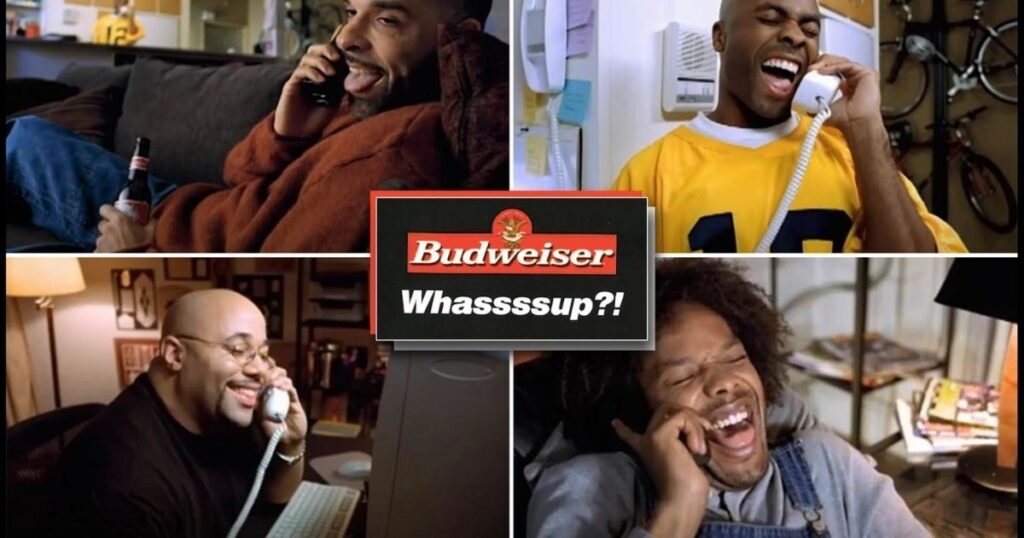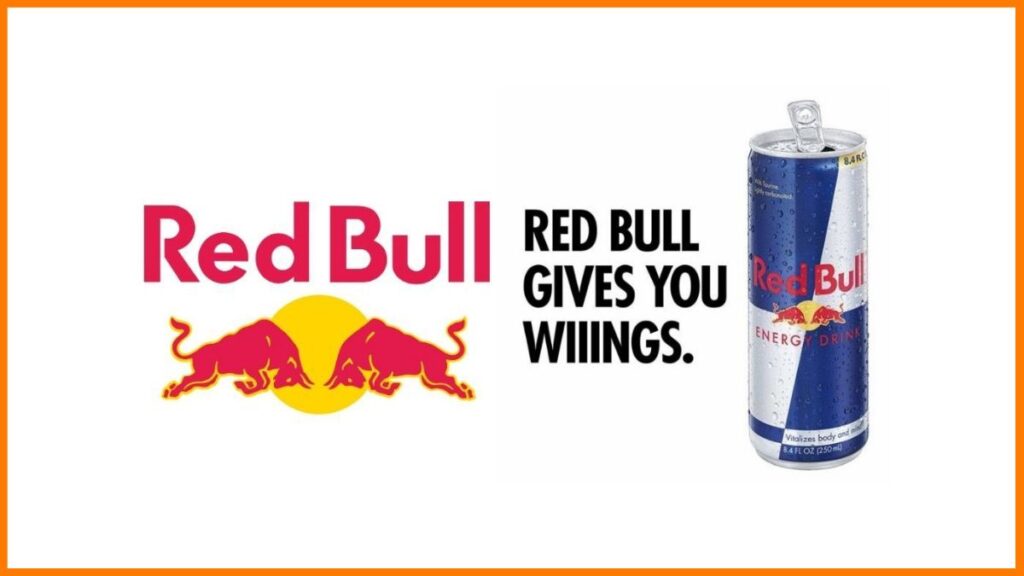
If you want your company to be successful, effective brand marketing is integral.
Whether you’re launching a tech start-up or growing a family enterprise, you need to be able to market your brand successfully.
There are many ways to market a company, but brand marketing is unique in that it focuses on your brand first rather than your products and services.
Central to this approach is telling your unique story and positioning your brand in the correct market. To do this, you need to understand and articulate your brand successfully.
So, in Arvin’s Brand Marketing 101 Guide, you will learn everything you need to know about promoting your brand.
We start with a definition of brand marketing, followed by an explanation of its objectives. We then present five steps you can take to launch a campaign before revealing common mistakes that marketers make when promoting their brands.
Our article ends with an introduction to three of the most iconic marketing campaigns from history and answers to some frequently asked questions about marketing.
Brand marketing definition: Understanding the significance of your brand
“Brand marketing is the approach used by companies to promote and establish a brand in a market by creating a unique identity, values, and perceptions that differentiate it from competitors.” The American Marketing Association.
We love this definition from the American Marketing Association, but we want to expand on it.
Brand marketing is an all-encompassing term that essentially deals with promoting a company. But to understand and appreciate it, we need to separate the two key terms – brand and marketing.
Brand
A brand is a company with a distinct identity, typically attached to one company or business entity.
As Seth Godin, marketing guru, states, your company’s brand is its most crucial aspect. It’s how your company is perceived. If people don’t like your brand, they won’t buy your products.
Godin states: “A brand is the set of expectations, memories, stories, and relationships that, taken together, account for a consumer’s decision to choose one product or service over another.”
Therefore, before you can market your company, you need to fully define and understand your branding. You must define it, add value to it, and tell stories about it. What are you trying to market if you can’t articulate your brand?
As we explain in the next section of this article, all brand marketing must begin with the brand itself.
Marketing
Marketing is the act of promoting a brand with the goal of raising awareness and driving sales. To achieve this, you must promote the brand’s values, identity, and objectives through engaging marketing materials.
As such, most companies develop branding guidelines as a starting point, which indicate how the brand should be represented and promoted in the public image.
Then, as part of a wider strategic plan, clear objectives and measurable milestones should be articulated so you can monitor your brand marketing success.
As Walt Disney famously said: “The goal of marketing is to create a customer who is so loyal, they will never consider buying from anyone else.”
You do this by marketing your brand, not your company’s services, as we explore below.
Your initial objectives as a marketer: The purpose of brand marketing
Traditionally, marketing a company’s services or products was as simple as explaining what it offered and showing the customer why they should pick the company over a competitor.
But brand marketing has evolved significantly in recent years, focusing much more on the emotions behind the purchasing decisions customers make.
Marketing experts agree that people are much more likely to buy from a brand they have an emotional connection with. One way marketers capitalize on this is by promoting brands with strong core values that appeal to many customers.
Therefore, one of the main objectives of brand marketing is to showcase a brand’s core values, identity, and unique image in the current marketplace.
Equally as important are the following brand marketing objectives:
Objective 1: Increasing brand awareness
Brand awareness relates to how visible your brand is in the relevant marketplace. The best brands are immediately recognizable and attract customers immediately. Think of brands like McDonalds and Starbucks. People only have to see the golden arches or the green siren to be drawn to buy a Big Mac or a cappuccino.
Objective 2: Ensuring brand engagement
Savvy marketers rely on numerous methods of brand engagement to promote companies online. Social media posts across numerous platforms are the most common method today, but product reviews, website visits, and person-to-person exchanges are also valuable. User-generated content is also hugely important for brand engagement.
Objective 3: Recruiting brand ambassadors
There are two types of brand ambassadors – formal and informal ambassadors. Formal ambassadors are those you pay to promote your brand, like David Beckham for Adidas. Informal brand ambassadors are those who take it upon themselves to promote your brand because of how they feel about it. These people are crucial to the success of your company.
Objective 4: Establishing your unique credentials
Marketing is about showing how your brand is different, not how it’s the same as others. While you might take inspiration from successful companies, you shouldn’t try to replicate their achievements. Ultimately, a successful campaign is about affirming your USPs and showing the world why they should buy from you. You cannot achieve this if your entire marketing campaign is copied from a competitor.
How to launch a successful brand marketing campaign
Now you know what brand marketing is and what its main objectives are, it’s time to look at how to enact a successful campaign.
Of course, one size certainly doesn’t fit all when it comes to marketing, and what works for some brands won’t work for others.
But you can follow these guidelines to promote and market any brand successfully:
Step 1: Create a robust and attractive brand
The first and most crucial step is to create a brand worth marketing. Therefore, your first port of call should be developing and refining your brand’s identity.
You must agree with the marketing team on the name of your company. This is difficult; there’s no getting away from it. Create a list and work through the options until you all agree on one or two.
Next, it’s time to choose a logo that best encompasses your brand’s image. Rather than paying for an expensive graphic designer, sign up today to use our free logo maker to perfectly highlight your brand’s identity.
Simply enter your brand’s name and add suggestions for colors, themes, and values, and our AI logo maker will do the rest. After prompting our logo maker, you will have the results in seconds.
You can see below how it works. We prompted Arvin’s logo maker to create a geometric logo for a charity named Zuri, and here’s what it came up with:

Feel free to play with the logo maker until you’re happy that the logo perfectly represents your brand.
At this stage, we also advise you to create clear branding guidelines that all marketing team members can follow. This includes your company’s color scheme, font choice, and other key aspects. This ensures consistency when posting online and helps to create a professional brand.
Step 2: Articulate your values
Central to any brand are the values that underpin it. While your objective might be to sell handmade soap, your values are what will attract people to your brand.
For instance, your handmade soap company might have some of the following core values:
- Transparency within the supply chain
- Respect for the individual rights of all producers
- Integrity and sustainability when it comes to product pricing
When marketing your brand, these values should be front and center of your messaging.
A brilliant example of a company with strong company values is TOMS, the shoe company that gives away one third of its profits to good causes.
The company is guided by the United Nations Guiding Principles on Business and Human Rights and prioritizes integrity, fairness, and ethics throughout the supply chain. For inspiration on launching a brand marketing campaign, you can check out some of TOMS’ marketing strategies on social media.
Step 3: Define your audience
The next step is to think clearly about your intended audience. Who is going to buy your products or services? Who will your brand most appeal to?
To connect with your intended audience, you must try and understand them. What are their buying habits? What values inspire them? What is the best way to communicate with them?
It’s not enough to say that everyone in the world might like your products and services. You must be specific and target an appropriate segment of the global market for brand success.
While there are many ways to define your target audience, you can take these simple steps to get started:
- Be clear about the characteristics of your products or services and understand precisely what you’re offering.
- Research the market and consider who your competitors are marketing their products or services to.
- Create detailed buyer personas with key demographic data like age, location, profession, hobbies, goals, pain points, etc.
- Decide which marketing channels are most suitable for reaching your target audience. Be as specific as possible. Don’t just say social media. Decide which social media channels (Facebook, Instagram, etc.) are most suitable.
- Test your initial strategy and see how successful you are at engaging with your target audience. Be willing to refine your approach if it’s not initially successful.
Step 4: Produce high-quality content
You’re now ready to start connecting with your audience. To do this, you must produce and promote high-quality, engaging content.
Content creation isn’t easy, and there are so many things to consider. You will need to produce social media content, website content, and other forms of marketing content to connect with your audience.
Also, your content must be values-driven and focused on your brand, not just on the provision of generic information to your customers. High-quality content is one of the best ways to distinguish yourself from your competitors.
Try out our social media bio generator tool to craft engaging biographies for all your brand’s social media channels.
You can then use our writing improver tool to polish your text before putting it out on your socials. This will help to prevent mistakes and ensure your brand’s content is the best it can be.
If you want to publish high-quality articles for your brand’s website, learn how to use our free online AI article writer, powered by GPT-4o. While a human touch to content is key, don’t be afraid to use AI as part of your successful brand marketing campaign.
Step 5: Manage and monitor your brand marketing campaign
As soon as your brand marketing campaign is live, you must consider how to manage it. Don’t fall into the trap of thinking that marketing will look after itself, as some small companies do.
You need to allocate a person (or an entire team, depending on your company’s size) to manage your brand marketing campaign.
This person should be responsible for promoting your brand and producing high-quality content that’s consistent. You will need to create a posting schedule and agree to key milestones that indicate success.
You can use social media metrics and sales figures to monitor your brand marketing success. Here are some of the ways to measure your impact and manage your campaign in the medium and long term:
- Agree to key performance indicators (KPIs) and periodically review your company’s success.
- Look to metrics like website traffic, social media followers and engagement, and customer feedback for brand success.
- Crucially, don’t be fooled by vanity metrics. Your bottom line is the most important indicator of success, so ensure that your marketing campaign is driving sales.
Expert advice: Common brand marketing mistakes to avoid

Though it seems relatively straightforward, marketing a brand comes with many challenges. We spoke to several marketing executives to find out some of the pitfalls they encounter when launching brand campaigns.
As a result, here are some of the most common mistakes people make when trying to succeed with brand marketing:
Mistake 1: Too much focus on the product or service
Small business owners often tend to get lost in the details of their products and services when promoting their business. In other words, they forget about the emotional aspect that leads people to buy from a specific company.
As a result, we often see companies relentlessly pushing their products and services on social media without telling their stories. Particularly as a small business owner, you must market your USP and show the world why they should choose your brand.
Often, telling your story enables the products and services to speak for themselves. So, don’t focus exclusively on marketing your products and services at the expense of the back story of your brand.
Mistake 2: Inconsistent promotion and content creation
Many brands fall into the trap of posting online inconsistently. This might be ten blog posts in one month, followed by none the next.
It might also be fifteen Instagram posts in a week, followed by two the next. There are many reasons for this. Some business owners like to get their content out into the world when it’s fresh in their minds. Others simply run out of time and don’t update their online channels for a while because they’re focusing on other things.
But this is a really easy mistake to avoid. We recommend setting a specific amount of time each week (perhaps 2-3 hours) to create content for your website and social channels. You can outsource this if you need more support, with lots of freelancers available to help your business.
Then, download a posting schedule tool like Later to ensure your content goes out on your socials and website consistently.
Not only will this help with your brand’s visibility, but it will help you to improve engagement with your customers on a much more consistent basis.
Mistake 3: Inappropriate or insufficient KPI tracking
The only way to determine the success of your brand marketing campaign is to track it over time. Therefore, you must establish the KPIs that you want to look at and agree to regular monitoring and evaluation.
You can achieve this via a weekly or monthly marketing meeting with the right people in your business. At these meetings, you should present data relating to the KPIs and consider how your campaign is progressing.
If you’re not meeting your targets, consider how to refine your campaign to improve your results. The act of reviewing and refining your brand marketing approach will pay dividends in the long run, but it’s something that many business owners fail to do.
Mistake 4: Ignoring the competition
While we don’t recommend modeling your entire brand marketing campaign on that of a competitor, you need to be aware of what others in your niche are doing.
You can do this by following your competitors on social media and taking inspiration from some of their recent campaigns.
You can decide whether or not to incorporate some of their approaches into your strategy at your regular marketing meetings.
So, don’t ignore your competition. Keep up to date with their methods of brand promotion and consider which might improve your own marketing and promotion.
Mistake 5: Absence of branding guidelines
Something else that marketers often see when working with small businesses is a lack of branding guidelines. When a marketer joins a team as a freelancer, one of their first questions will be, “Can I see your branding guidelines?”
You will be amazed at how many small businesses don’t have any guidelines. They don’t have to be complex or overly detailed, but they’re integral to your brand’s consistency online. If you don’t have any guidelines, here’s what you should include:
- Typography (which text your company uses when posting online).
- Color palette.
- Logo.
- Imagery.
- Voice and tone.
You can put together branding guidelines in 20 minutes, and they will significantly improve your output. Write them in a document and save it as a PDF. You can then share these guidelines with anyone who posts on your website or social media channels. You will notice a significant improvement in your content as a result.
Outstanding brand marketing campaigns for inspiration
You now have the key steps required to launch a successful brand marketing campaign. We’ve even provided insight into some of the mistakes that marketers make when promoting their brands.
But to help you as you launch your own campaign, we want to draw your attention to some recent campaigns that we absolutely love. You can draw on these campaigns for inspiration as you launch and market your brand:
Budweiser (Whassssup?!)

One of the best beer advertising campaigns in recent memory came from Budweiser between 1999 and 2002. It was initially aired during Monday Night Football segments in the United States but was then rolled out to a wider audience.
The idea was to show a “bromance” between Bud drinkers, who answered their phones by shouting Whassssup?! to their buddies. It was a brand marketing masterstroke that had nothing to do with the beer itself.
Rather, it played on the relationship that Bud drinkers had with each other. The ad was so successful in the USA that it was introduced to the CLIO Hall of Fame in 2006. A true stroke of marketing brilliance from Bud!
Nike (Just Do It)

Launched in 1988, Nike’s Just Do It campaign is perhaps the best-known of all brand marketing series in history. Featuring amateur and professional athletes alike, it focused on the fact that any person can get up and do exercise, illustrated by the appearance of 80-year-old Walt Stack, who runs 17 miles every morning.
This was the perfect example of an emotionally driven marketing message that has stood the test of time—so much so that it’s still Nike’s tagline today.
We recommend watching some of Nike’s TV adverts from the 1990s to see just how powerful the Just Do It campaign was in its early days.
Red Bull (Gives You wiiings)

Red Bull’s marketing slogan that the drink “gives you wiiings” is almost as iconic as McDonald’s “I’m lovin’ it.”
Through successful TV marketing and online campaigns, Red Bull has positioned itself as the undisputed number-one energy drink in the world.
However, one of Red Bull’s main marketing masterstrokes was the company’s involvement in extreme sporting achievements. For instance, Red Bull Stratos saw Felix Baumgartner free-fall back to earth from space, a remarkable achievement that was super powerful for the brand.
The bottom line: Why is brand marketing necessary?
As we bring this guide to a close, we want to remind you that brand marketing is necessary for every company, big or small. Whether you’re launching a start-up or responsible for promoting a Fortune 500 company, marketing is integral to your success.
Sure, the way you go about it will be different, and you will have significantly different budgets available, but you still need to promote and market your brand.
The guidelines we’ve outlined in this guide are applicable to any brand, regardless of size. You must begin with an introspective look at your organization and be able to define the core values of your brand.
Then, you and your team can operationalize an ongoing marketing strategy to achieve growth and business success. Feel free to turn to the successful campaigns from Nike, Bud, and Red Bull as sources of inspiration.
Also, explore Arvin’s full suite of AI features to help you market your brand. For instance, learn how to use our AI image generator to create stunning images for your marketing campaign this year.
Brand marketing FAQ
What is the concept of brand marketing?
The concept is rooted in your brand’s identity. The best marketing campaigns focus on the values and unique aspects of a brand. After all, people make emotional decisions when purchasing items and services, so they want to resonate with your brand. You should consider this when establishing your guidelines and ascertaining what you hope to achieve.
What is an example of branding in marketing?
There are many high-profile examples of branding in marketing. Nike’s brand is central to all of its marketing campaigns, perfectly exemplified by the Just Do It campaign introduced above. Fundamentally, the brand should be front and center of a company’s campaign. It should be values-led and unique, enabling the buyer to resonate with the brand throughout the campaign.
Why is brand marketing important?
It’s important because it’s a way of securing customers so that your company can grow its bottom line. Moreover, effective campaigns increase your brand’s visibility and engagement. It can help your business make it to the next level and help you achieve numerous KPIs. Also, brand marketing helps with consistency throughout the marketing department.
What do brand marketers do?
Brand managers are responsible for overseeing the development and promotion of a company’s brand. This includes things like the logo, promotional content, social media campaigns, and other aspects of the company’s marketing operations. Many brand managers are also responsible for managing the company’s marketing budget, though this isn’t always the case.






